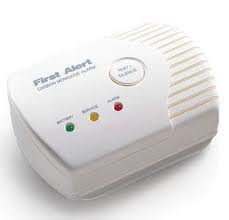Advice from West Midlands Ambulance Service on the dangers of carbon monoxide poisoning.
Winter has started to show its teeth this week and with it most of us have been turning up the heating at home. Unfortunately, the onset of the colder weather leads to an increase in cases of accidental carbon monoxide poisoning.
Carbon monoxide (CO) is a colourless, odourless gas. Around 4,000 people attend A&E each year due to the effects, which results in 200 cases needing hospital treatment, and tragically, 40 deaths. Older people, children, pregnant women and their unborn children and those with breathing problems or cardiovascular disease are particularly at risk of carbon monoxide poisoning. However, the reality is that almost all of those cases could be avoided with the purchase of a carbon monoxide alarm.
It can occur from inappropriate use of cooking equipment e.g. gas ovens being used for heating purposes or where oversized pots are placed on gas cooker rings. Another common cause is failing to maintain fossil fuel or wood burning appliances, chimneys or flues, or reducing ventilation of rooms to conserve warmth.
Recognising CO poisoning is not easy; it often appears to be other common conditions such as food poisoning. In diagnosed cases CO poisoning, patients have usually reported suffering from headache, with other symptoms including vertigo, reduced consciousness, a feeling of weakness, nausea and vomiting.
Exposure to high concentrations of carbon monoxide leads to collapse and death within minutes. However, exposure to lower levels for a prolonged period can also be extremely dangerous. It is associated with lasting neurological effects including difficulties in concentrating and emotional change.
Avoiding exposure to CO is of particular importance to pregnant women. Exposure to CO reduces the amount of oxygen available for the growing fetus and has been linked to birth defects and other poor pregnancy outcomes including fetal and infant mortality.
The following signs can be associated with a carbon monoxide build up:
- ·Black sooty staining on or around an appliance (e.g. stoves, boilers and fires) such as on the walls;
- ·Smoke or excessive condensation accumulating in rooms due to faulty flues: though you cannot smell carbon monoxide, you can often smell other combustion products;
- ·Yellow or orange, instead of blue, flames from gas appliances or boiler pilot lights.
Specialist paramedics from the Hazardous Area Response Team (HART) carry equipment to detect carbon monoxide and how badly affected patients are. John Woodhall, is a paramedic and Support Manager with the HART Team. He said: “Carbon monoxide is a silent killer which has no smell or taste and sadly leads to deaths every year.
“The vast majority of people now have smoke alarms. Having a carbon monoxide alarm similarly doesn’t cost much, but what price can you put on the life of a loved one? Please don’t take the chance; get an alarm fitted and make sure it, along with your smoke alarm, works each week. Your life could depend on it.”
For more information on carbon monoxide poisoning and its symptoms, log onto: www.nhs.uk/conditions/carbon-monoxide-poisoning/Pages/Introduction.aspx
